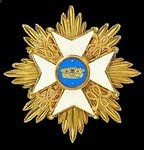I wasn't happy with the collars and the hats, especially the cockade, so I've revised all the French Infantry Templates and uploaded the new versions.
Saturday, 1 September 2007
All French Infantry Templates revised
Posted by
David Morfitt
at
Saturday, September 01, 2007
7
comments
![]()
Friday, 31 August 2007
7th French Infantry Template - Regiment Languedoc

And here is the last of the series of French Infantry variants; a private of the Languedoc Regiment. It had a very similar history to La Reine. The main feature of the uniform is the pattern of 6 buttons on the pocket flap.
The next French Infantry templates will be Swiss and German Infantry.
Posted by
David Morfitt
at
Friday, August 31, 2007
0
comments
![]()
6th French Infantry Template - Regiment La Reine

The 1st battalion stayed in Europe; the 2nd arrived in Canada in 1755, where it served in many of the campaigns until it returned to France in 1760. The main distinguishing feature of the uniform is the pattern of 8 buttons on the pocket flaps.
Posted by
David Morfitt
at
Friday, August 31, 2007
0
comments
![]()
Thursday, 30 August 2007
5th French Infantry Template - Regiment Royal Roussillon

This was an old regiment with a distinguished history. Both battalions of this regiment had a fairly eventful time in the SYW. The 1st battalion arrived in Canada in 1756 and fought in various major engagements including Ticonderoga and the Plains of Abraham before returning to France in 1761. The 2nd battalion fought in Germany and was at Rossbach. The uniform had 6 buttons on the cuff with the common horizontal pocket with 3 buttons.
Posted by
David Morfitt
at
Thursday, August 30, 2007
0
comments
![]()
4th French Infantry Template - Regiments Bourgoyne, Cambis, Guyenne and La Sarre.

This is a somewhat refined version of the first French template I did; many regiments had this simple design of uniform, including four of the regiments sent to Canada: Bourgoyne, Cambis, Guyenne and La Sarre. Distinctive features are 3 buttons on the cuff and a horizontal pocket with 3 buttons.
Posted by
David Morfitt
at
Thursday, August 30, 2007
0
comments
![]()
3rd French SYW Infantry - Regiment Béarn

And here is the last French Infantry Template for today - a private of regiment Béarn. During the SYW the 1st battalion stayed in France and was mostly employed on coastal guard duties. The 2nd battalion went to Canada in 1755; it was involved in the capture of Fort Oswego in 1756, the capture of Fort William-Henry in 1757, the battle of Ticonderoga in 1758, the siege of Quebec and the battles of Montmorency and The Plains of Abraham in 1759, the battle of Ste. Foy and siege of Quebec in 1760, and it surrendered at Montreal in September of that year. The uniform is very similar to that of Berry (below) except that it has only 3 buttons on the cuff.
Posted by
David Morfitt
at
Thursday, August 30, 2007
6
comments
![]()
Wednesday, 29 August 2007
2nd French SYW Infantry - Regiment Berry

The 2nd and 3rd battalions of this regiment arrived in Quebec in late July 1757, although they were originally destined for India. They served at Ticonderoga in 1758 and at Ste. Foix, the siege of Quebec and the battle of Isle-aux-Noix in 1760, before surrendering at Montreal with many of the other French battalions on the 8th September 1760. The 1st battalion stayed in Europe. After the return of the remnants of the 2nd and 3rd battalions to Europe the regiment was reformed into 2 battalions in April 1761. Distinguishing features of this regiment's uniform are the 5 buttons on the cuff, the parallel vertical pockets with 3 buttons each and the collar.
Posted by
David Morfitt
at
Wednesday, August 29, 2007
0
comments
![]()
First of the New French Infantrymen - Regiment Artois

And here is the first of the French infantry, a private of the Artois Regiment. The 2nd Battalion was part of the garrison of Louisbourg in Canada and was captured when it fell to the British in 1758. The 1st Battalion mostly served on garrison duty in France during the SYW. Distinctive features of this uniform are the cuffs with 6 buttons and the pocket flap with 9.
Posted by
David Morfitt
at
Wednesday, August 29, 2007
0
comments
![]()
French uniforms of the SYW - what a nightmare!

The lack of postings here might suggest that nothing is happening but in fact I've been trawling through everything I can find on French infantry uniforms of the SYW to try to make sure I get them right. It seems that nothing is quite certain and the distinguishing features of the various regiments, especially the pocket flaps and their button patterns, the cuff buttons and whether or not they had collars, are, to say the least, very confusing to establish. It doesn't help that the regiments that served in Canada often had different uniforms there from those they wore in Europe! But putting what I've found together gives me something with perhaps a 70% chance of accuracy, which, in this complex mess of a subject, will have to do, I think. Anyone who disagrees can at least edit the templates to make them into something they think is correct!
Posted by
David Morfitt
at
Wednesday, August 29, 2007
6
comments
![]()

















